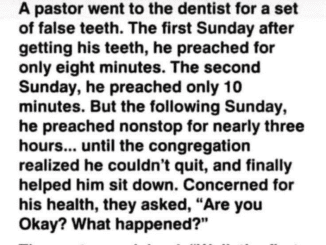Visual puzzles are an exciting way to challenge our brains, sharpen our focus, and improve our attention to detail. If you enjoy brain teasers, you’re in for a treat! Today, we have a visual challenge that will put your eyesight and observation skills to the test. Hidden in an image are two eagles, but only one is easily visible. The question is: can you spot where the second eagle is?
Many people find puzzles like these frustrating, but they also offer a fun way to engage your brain. Let’s dive in and see if you can locate the elusive second eagle!

Why Visual Challenges Improve Cognitive Function
Before we jump into solving this puzzle, it’s worth exploring why these types of visual challenges are beneficial for our minds. Engaging in brain teasers or visual puzzles improves both your cognitive function and visual processing skills. When you scan an image looking for hidden objects, your brain has to work extra hard to pick up on subtle differences in shapes, patterns, and colors.
This kind of exercise activates multiple regions of the brain responsible for focus, pattern recognition, and attention to detail. It’s like a workout for your brain that can improve memory, enhance problem-solving skills, and keep your mind sharp. So, beyond the fun, you’re giving your brain a little fitness session!
The First Eagle: Easy to Spot
When you first look at the image, the first eagle might pop out quickly. It’s clear, well-defined, and almost immediately grabs your attention. But don’t celebrate just yet—the real challenge is finding the second eagle, which is far more elusive.
Most people will naturally focus on the areas with more contrast, bold colors, or clear lines. However, the second eagle is likely hidden in a part of the image where these features are subtler. That’s why only those with keen observation skills will be able to spot it.
Why Finding the Second Eagle Is Tricky
The second eagle isn’t as obvious as the first one, and that’s why so many people struggle to find it. It’s hidden within the patterns of the image, possibly blending in with the background or camouflaged in a way that makes it nearly invisible to the untrained eye.
Here are a few reasons why you might be having trouble finding it:
- Camouflage: The second eagle is most likely designed to blend in with its surroundings, using similar colors and patterns to make it hard to distinguish.
- Distraction: Other elements in the image may pull your focus away, causing you to overlook subtle clues.
- Perception bias: Your brain is wired to look for certain shapes and patterns, but the second eagle might not follow the typical “eagle” shape you’re expecting.
Tips for Spotting the Hidden Eagle
To make your search for the second eagle more successful, try these tips:
- Change Your Focus: Instead of concentrating on the most obvious areas, look at the sections of the image you initially ignored. The second eagle might be hiding in the less prominent parts of the image.
- Zoom In: If you’re viewing the puzzle on a screen, zoom in and study the details closely. Sometimes, the eagle is small and tucked away in a corner or hidden within another object.
- Look for Symmetry or Repetition: Many puzzles hide objects by repeating certain elements in a symmetrical pattern. If you see two or more similar shapes, one of them might be hiding the eagle.
The Answer: Where Is the Second Eagle?
If you’re still struggling, don’t worry—you’re not alone. Many people find it difficult to locate the second eagle, and that’s why this puzzle is considered a challenge for only those with 10/10 vision. So, where exactly is the elusive bird hiding?
The second eagle is located within the red shape near the bottom of the image. Its outline blends into the surrounding colors, making it easy to miss unless you’re looking very closely. The clever use of camouflage tricks your brain into glossing over this part of the image, which is why only the most observant individuals manage to spot it.

What Makes This Puzzle So Effective?
This puzzle is a great example of how our brain can be tricked by visual elements. Even though the second eagle is technically in plain sight, our brains tend to ignore certain patterns or colors, especially if they don’t immediately stand out. The design of the puzzle forces us to slow down, focus, and look beyond the obvious.
Visual puzzles like this are not just entertaining—they teach us to pay closer attention to our surroundings and train our brains to become better at recognizing details. The more you practice, the better your brain becomes at spotting these hidden objects.
Conclusion: A Fun Way to Sharpen Your Mind
Finding the second eagle in this visual puzzle is no easy feat, and if you managed to spot it, congratulations! You’re among the few with a keen sense of observation. If not, don’t worry—this puzzle is designed to challenge your brain, and with practice, you can sharpen your visual skills and improve over time.
Remember, puzzles like these are not just a fun pastime but also a powerful tool for enhancing cognitive function. So, next time you encounter a brain teaser or hidden object challenge, take your time and enjoy the mental workout. You never know how much your brain might improve just by taking on these challenges.


